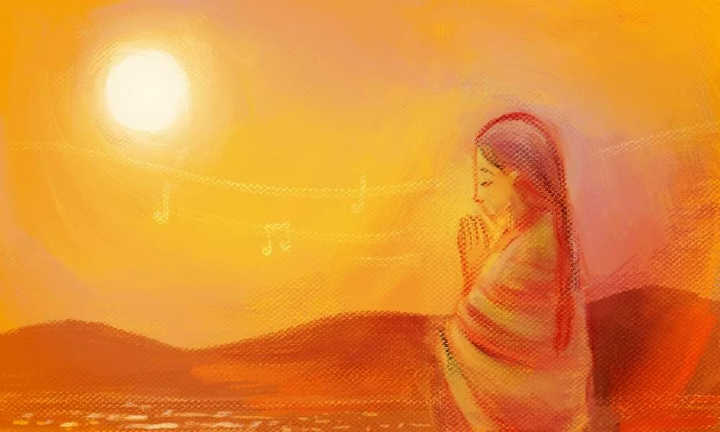
Sanatan Dharma is the essence of Hindu Rashtra
Mohan Bhagwat, chief of Hindu centric Rashtriya Swayamsevak Sangh (RSS) based in India speaks frequently and eloquently on issues like religious harmony, faith, Hinduness, Rashtra (nation or nationhood), Sanatan Dharma and essence of Hindu way of living.
At the recent Dharma Bhaskar Awards programme at Nagpur, a western Indian city that also houses RSS headquarters, Bhagawat said that Dharma was centrifugal to Indian ethos and equated Sanatan Dharma to Hindu Rashtra that looked intimidating for some.

The phrase Hindu Rashtra may need clarity given huge misconception on what it means or whom it relates to. Most misgivings are due to carefully carved anti-Hindu campaigns run by interested groups.
So, Hindu and Rashtra may have to be seen as two different words that mean differently. As per reports, RSS consistently said that Hindus had a distinct vision for life that’s beyond particular mode of worship or faith.
Supreme Court of India recently upheld the view that Hindutva was not a religion but way of life. A person living in India and that believes in any religion is regarded as a Hindu. Changing faith by personal preference for any reason does not alter one\’s life vision. That is why they all have a life vision of India, i.e., Hindu.[1] This is what RSS believes in.
The concept of Rashtra has flummoxed several critical commentators on Hindus and RSS. Rashtra is loosely described as a nation that embodies ancient Indian civilization and diametrically opposite to European view.
European nationalism has roots in Benito Mussolini, a fascist dictator’s view. When it came to guarding their interests, European nationalism was opportunistic and oppressive.
In contrast, Indian nationalism as propagated by Hindutva forces is based on unity in diversity and reformative to purge its society of evil. The term Rashtra or nationhood has its place inVedic literature to describe the national ethos of Bharatavarsha, a contiguous land mass between the snow-capped mountain peaks of the Himalayas in the north and the deep ocean in the south.

Rashtra also encompasses the land of seven rivers i.e. Sapta Sindhu. The civilisation that flourished over millennia in this land nation is imbued with spirituality, divinity, purity and motherhood.
A Rashtra is not closed, selfish and individualistic bound by boundaries. It respects pluralism and all-inclusiveness with the vision of \’Vasudhaiva Kutumbakam\’ which means the whole world is one big family.
In Indian civilizational discourse, the nation is often equated with one’s mother. In the Atharva veda, the Sanskrit verse says, “mata bhumiputroham prithvayah” meaning, this earth is my mother and I am her son. So those who believe in this broad spectrum of Rashtra or nationhood are Hindus. And, the concept of Hindu Rashtra has its moorings in this thinking.
On Dharma, Mohan Bhagawat said that it denotes Satva or basic nature of this country. Sanatan Dharma drives the concept of Hindu Rashtra. Bhagawat was quoted as saying that when the Hindu Rashtra progresses, it also translates to progress of Dharma. RSS firmly believes that rise of Hindustan or India was certain and God willing, Sanatan Dharma would take centre stage internationally.
RSS’s further amplification was that Dharma is not a cult, sect or a form of worship. Dharmic values include truth, compassion, purity and penance that are equally important.
Hindus and RSS, the largest global Hindu organisation, strongly believe that Sanatan Dharma was at the core for India’s global economic dominance for over 1600 years of recorded human history.
\”India was at the number one economic position for 1600 years and later it ranked in the first five countries. But in 1860, an invader (Imperialist British) understood the importance of \”Satva\” and introduced a new education system to destroy that \”Satva\”.
Despite many invasions, India remained one of the richest countries in the world as the \”Sattva of Dharma\” was maintained by its people,\” said Mohan Bhagwat.
In September 2022, Mohan Bhagwat had met Muslim intellectuals to discuss, strengthen religious harmony and inclusivity in the country. This was one of several such interactions at different levels the Hindu leaders have had with their muslim counterparts to ensure peace, tranquility and holistic development of Indian society.
Notwithstanding these efforts, several international outfits and motivated individuals reportedly have had attempted to foment unrest in Indian Muslims and Christians by asserting that RSS was against minorities and caused attacks on them.
However, the RSS chief stated that “scare-mongering by some is being done that there is a danger to minorities because of us. This is neither the nature of RSS nor of Hindus. Sangh resolves to stand on the side of brotherhood, amity and peace.\”[2]
In an interview to Organiser news weekly earlier this week, Mohan Bhagwat said, “foreign invaders are no longer there, but foreign influencers and conspiracies have continued. Since this is a war, people are likely to get overzealous. Although this is not desirable, provocative statements will be uttered.”
On way forward during RSS centenary year in 2025, he said, “by the time we reach a hundred, we will have to take Sangh everywhere and forge links with all the segments of the society so that people have better examples to follow. They do not give importance to Bollywood, media and politics.
Realising their duties, society should stand with the noble forces. The noble power should work in a harmonious, complementary relationship in the national interest. And whatever strength, expanse and workforce is needed for it, we will have to organise it by 2025. And, based on how much of this we accomplish, we will move ahead.\”[3]
[1] https://www.rss.org//Encyc/2017/6/3/basic-faq-on-rss-eng.html
[2] https://bit.ly/3ZstKsh
[3] https://organiser.org/2023/01/09/103852/eweekly/organiser-e-copy-15-january-2023/

